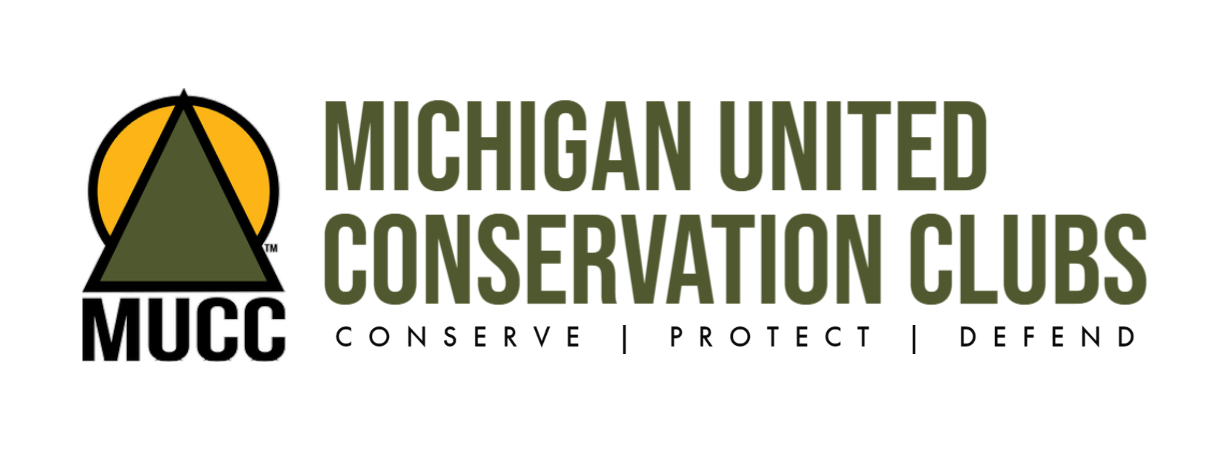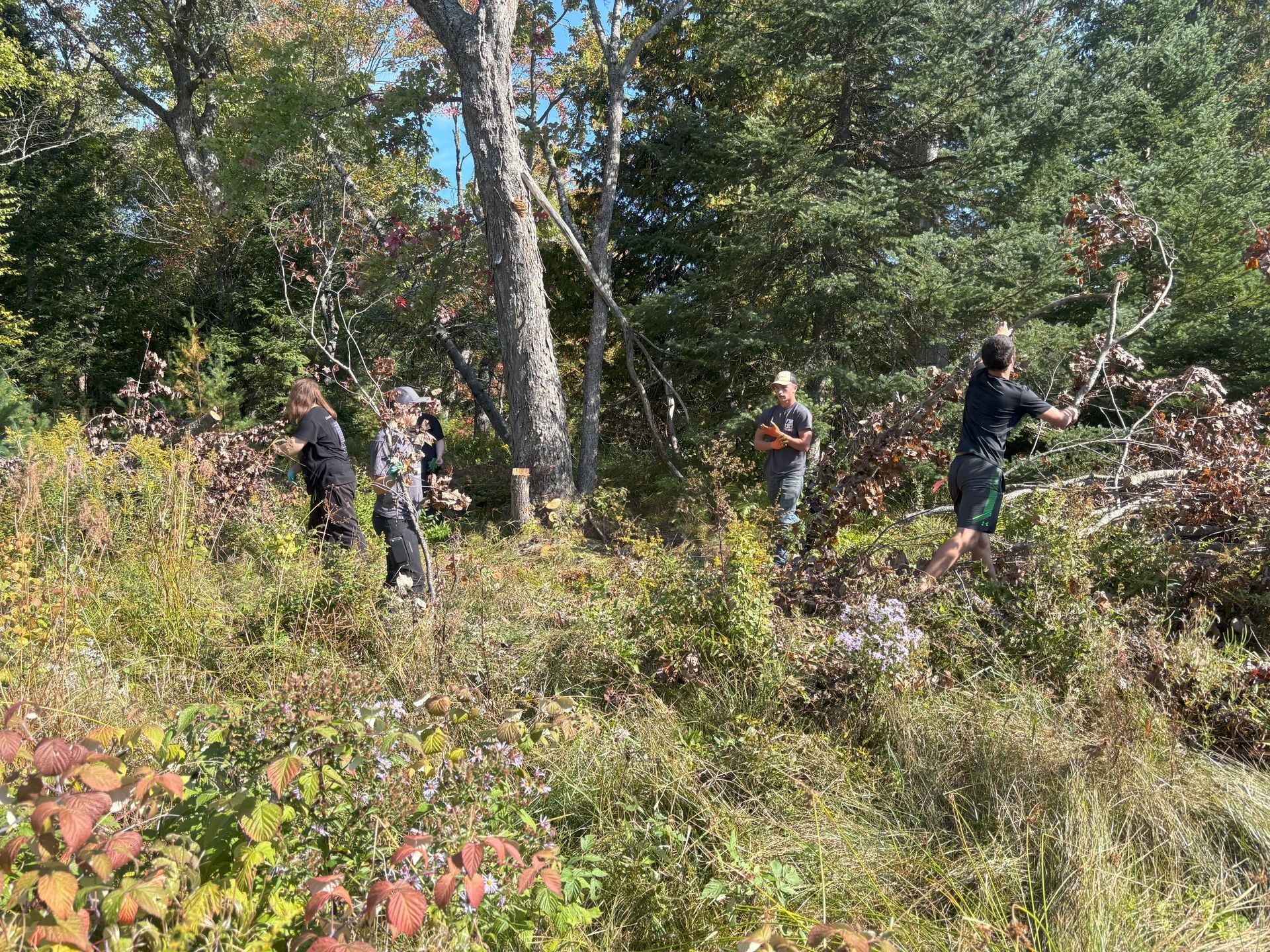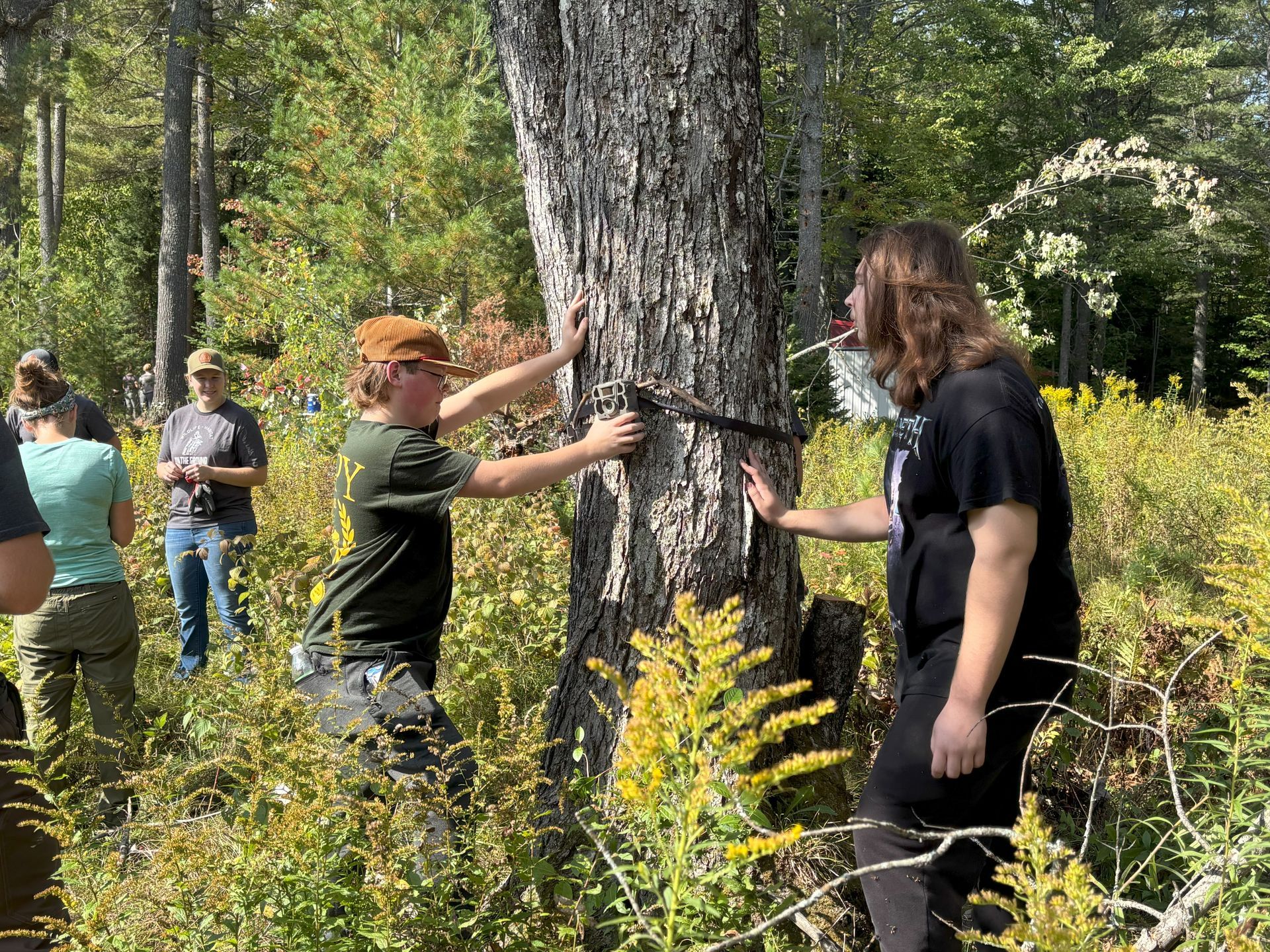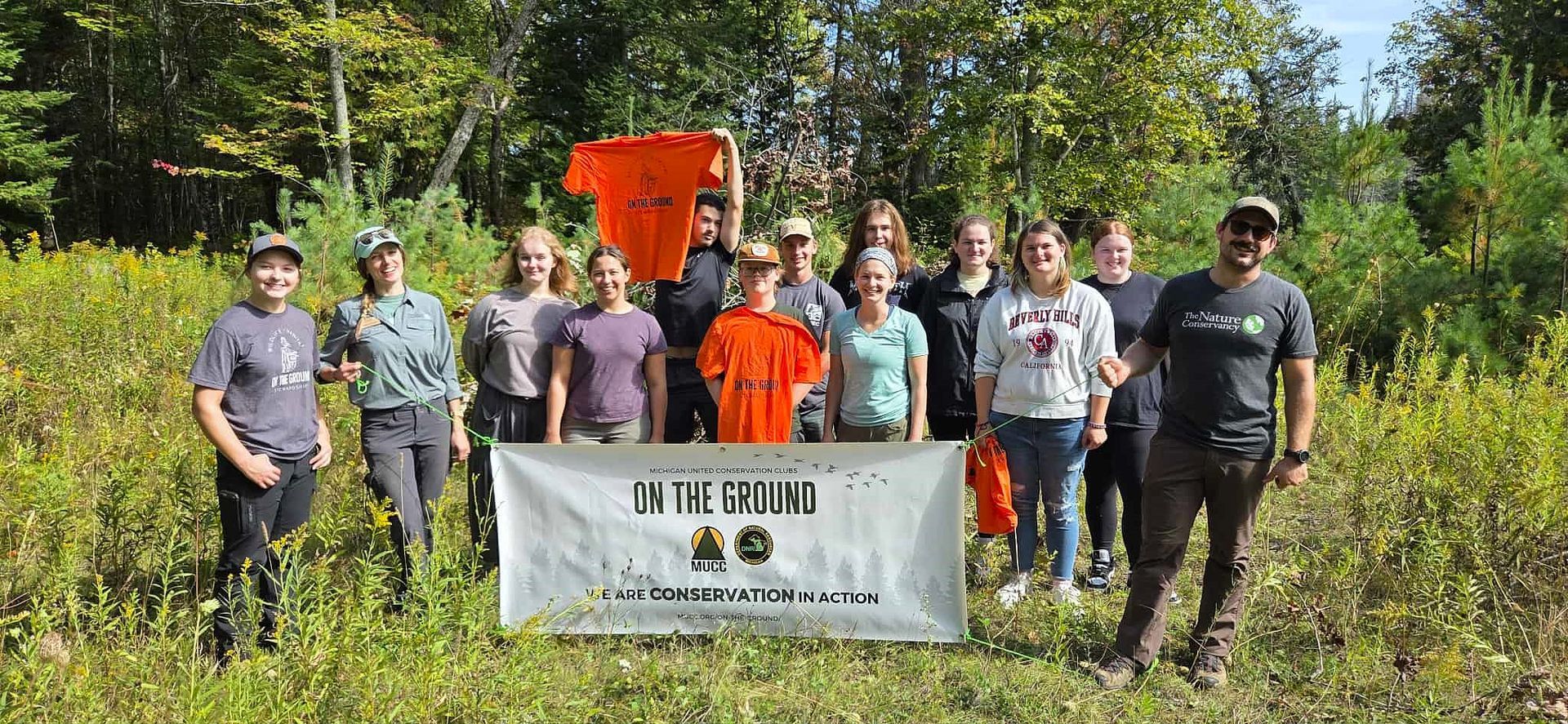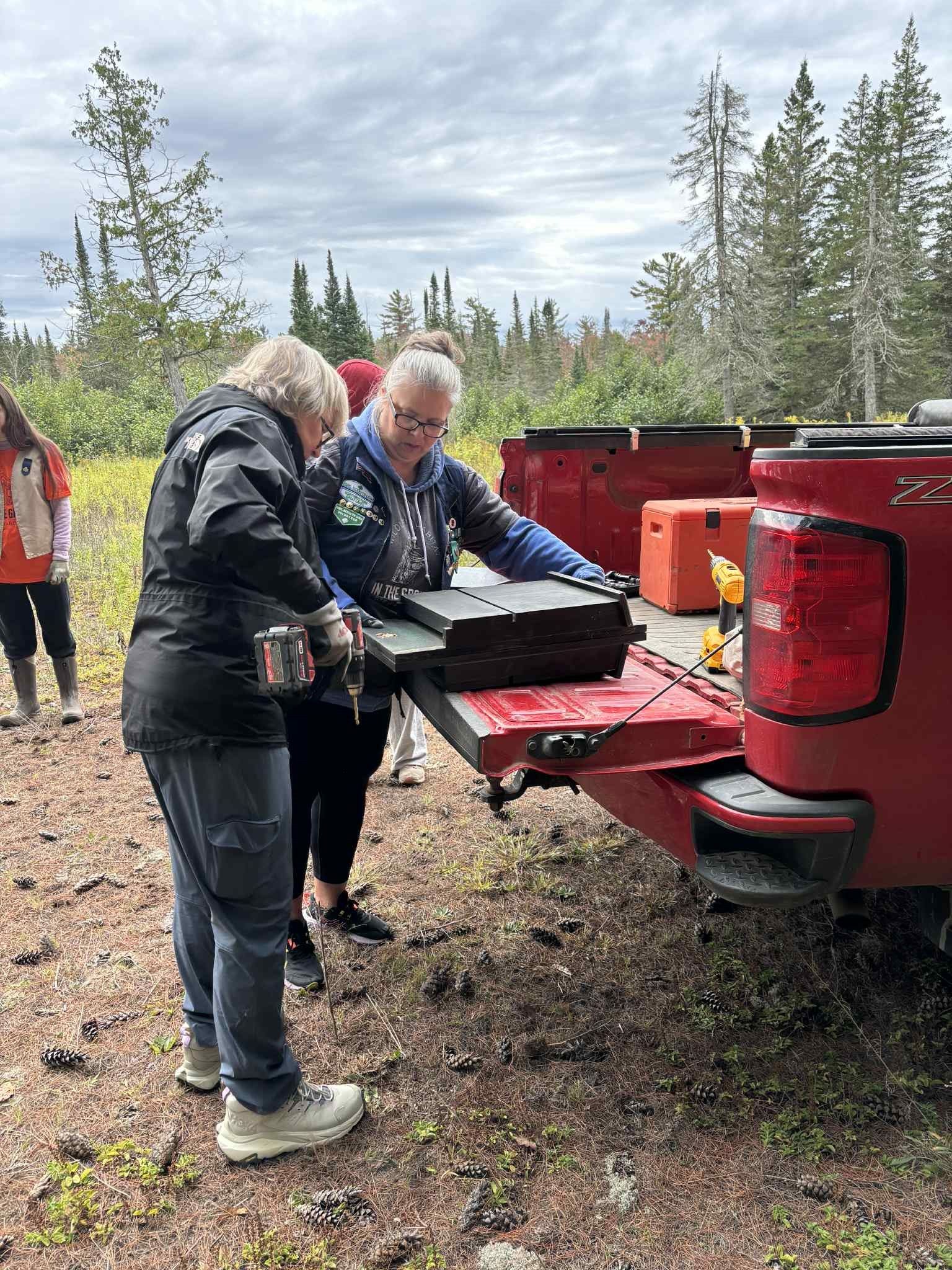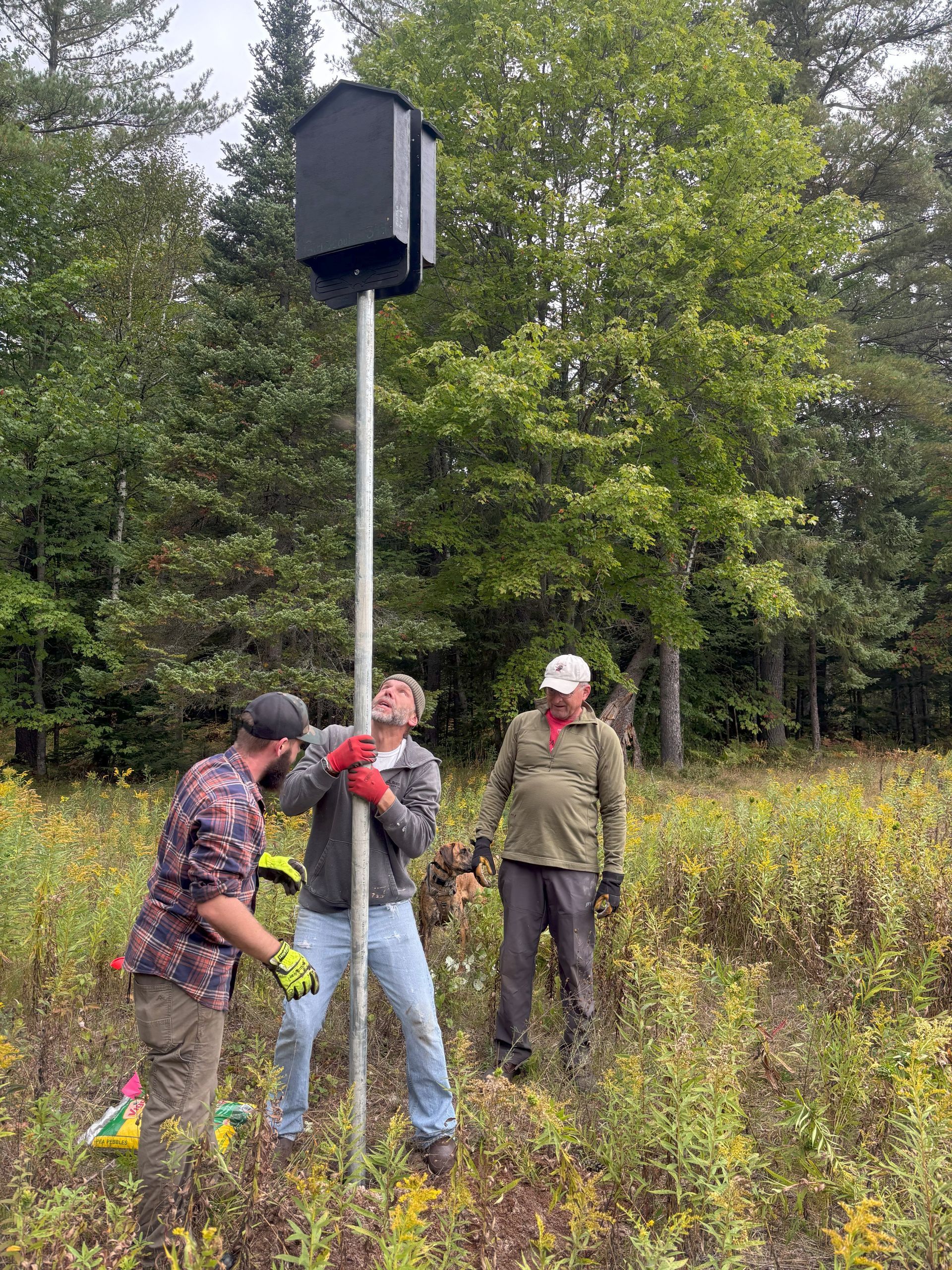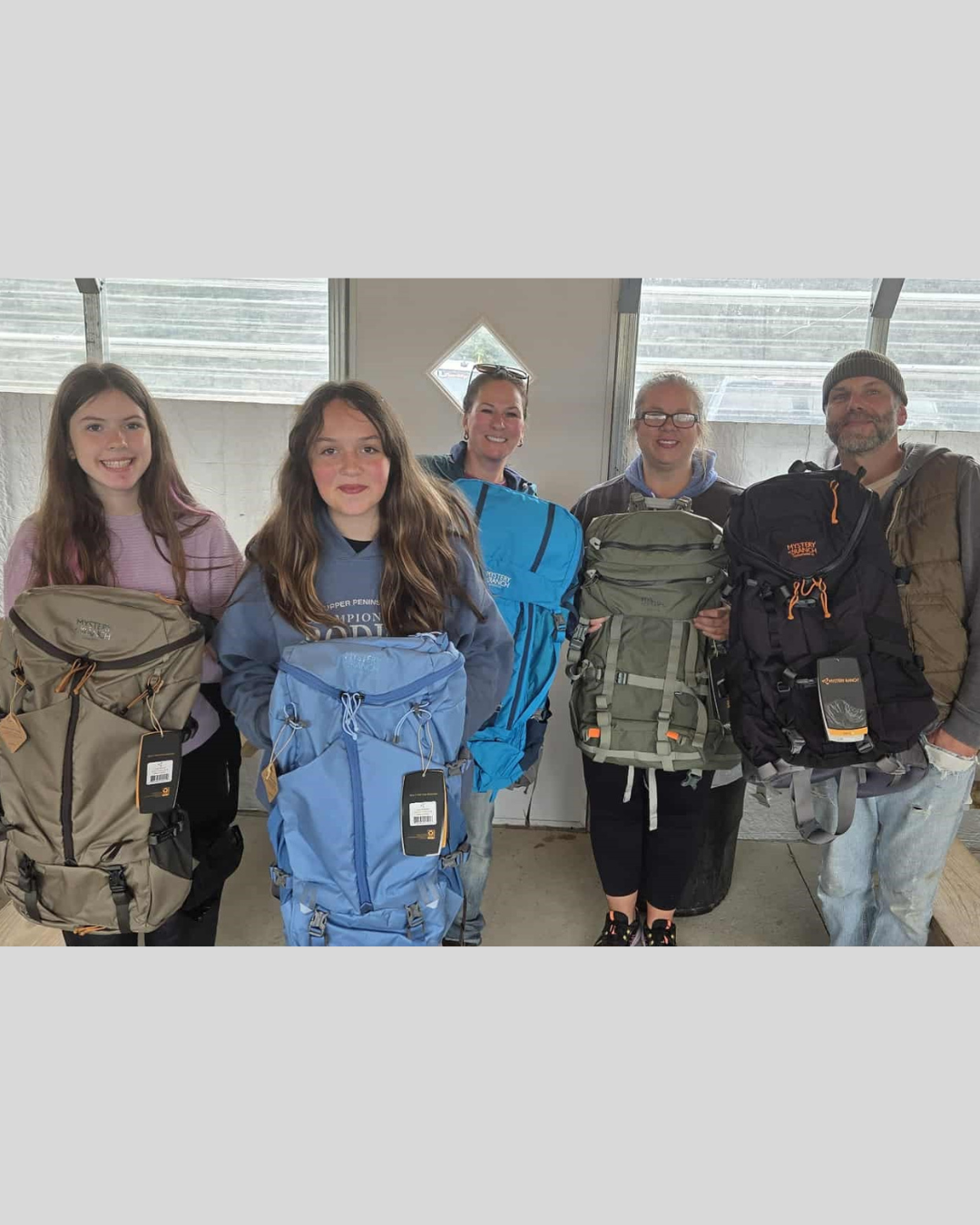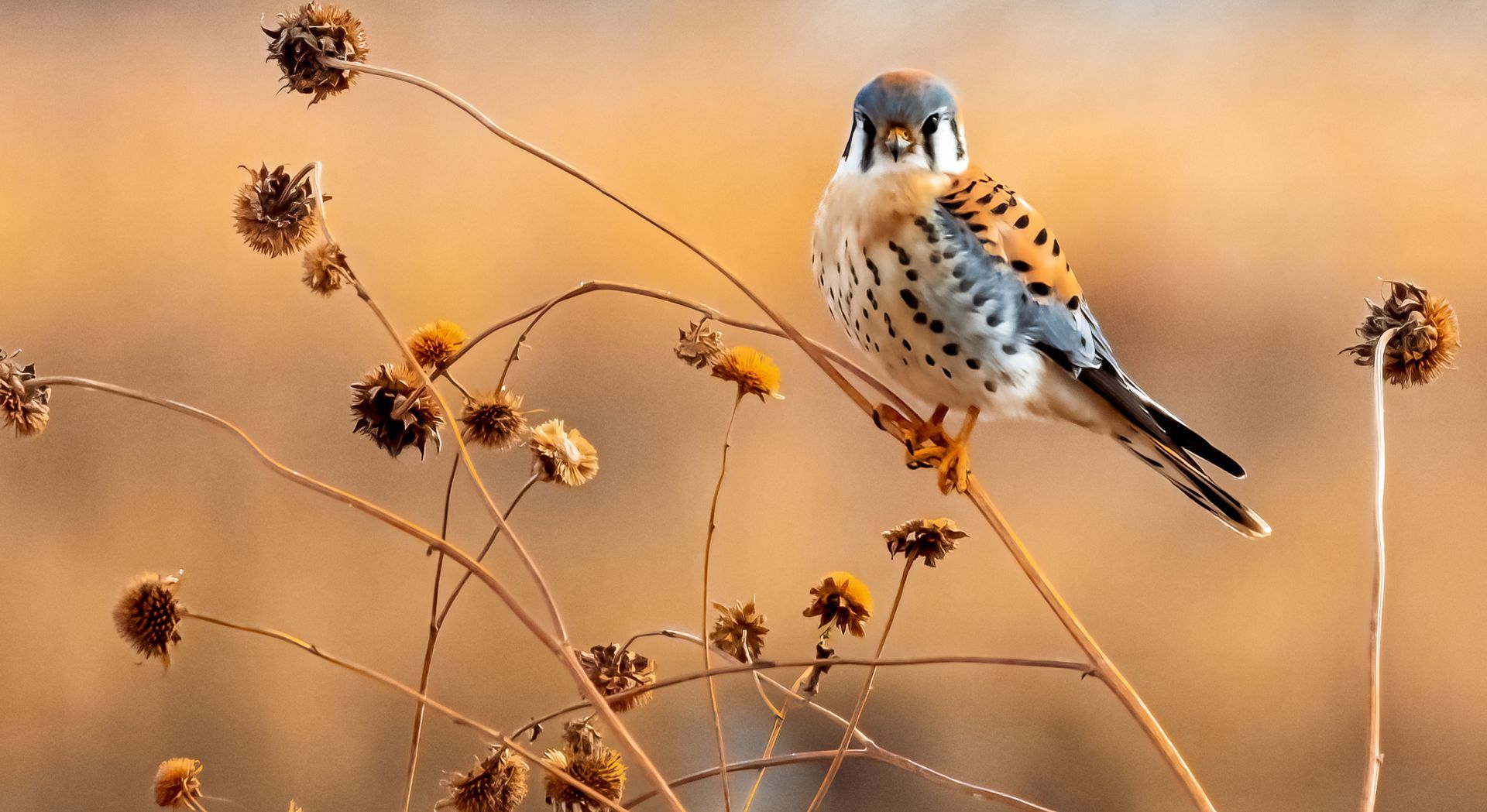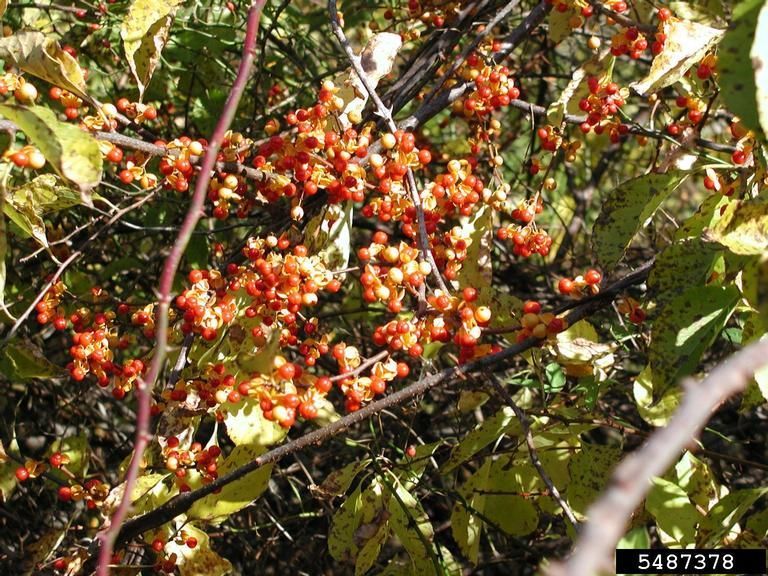On the Ground: Brush Piles and Bat Houses at McMahon Lake Preserve
Students Build Brush Piles
On Friday, September 19, 2025, MUCC’s OTG program partnered with The Nature Conservancy to host 11 student volunteers from LSSU for a brush pile building event. The brush piles were created within known snowshoe hare range in hopes of habitat enhancement for this and other species that utilize brush. In addition to building these structures, the students placed trail cameras, which will be observed by The Nature Conservancy to determine which species are utilizing the brush piles over time.
Rabbitat or brush piles can be built by humans to optimize habitat for the targeted species, often rabbits. These brush piles were built using pre-cut logs as the base in a log-cabin style structure with added branches on top for complexity and coniferous branches for insulation. Brush piles provide a means of shelter and nesting for many wildlife species, including small game, ground-nesting birds, and reptiles. In addition to the habitat these structures provide, they are also important hunting grounds for predators like carnivores and birds of prey due to the presence of the inhabitants.
Bat Habitat Enhancement
On Saturday, September 20, 2025, MUCC’s OTG program partnered with The Nature Conservancy to host 9 volunteers for a bat habitat enhancement project. The area was surveyed by the Michigan Natural Features Inventory for the most ideal installation locations of the boxes to be effective for the endangered northern long-eared bat and the Indiana bat. Girl Scout troop 5222 assembled 12 three-chambered bat boxes ahead of time and worked with volunteers to install them within the preserve.
These bat houses were certified by Bat Conservation International (BCI) and Merlin Tuttle's Bat Conservation (MTBC). Engineered to help sustain the population through the harsh winters the area sees, each box can house up to 220 bats. The Nature Conservancy will utilize bat-sensing devices in the future to determine the presence and usage of these boxes by the local bats.
Learn More
The OTG program is funded through donations, a grant from the Department of Natural Resources, and a grant from the National Wildlife Federation. If you like the habitat enhancement projects we do and want to help us extend our reach, consider donating here. Want to participate in one of our habitat enhancement projects? Visit our website for more information and a list of upcoming events. We work to conserve and enhance public lands by hosting volunteer workdays throughout the state geared toward habitat improvement. Common habitat projects include invasive species removal, wood duck boxes, river cleanups, tree plantings, and more. All ages are welcome, so bring a friend or two if you’d like! Registration details and more can be found on our website at mucc.org/on-the-ground.
